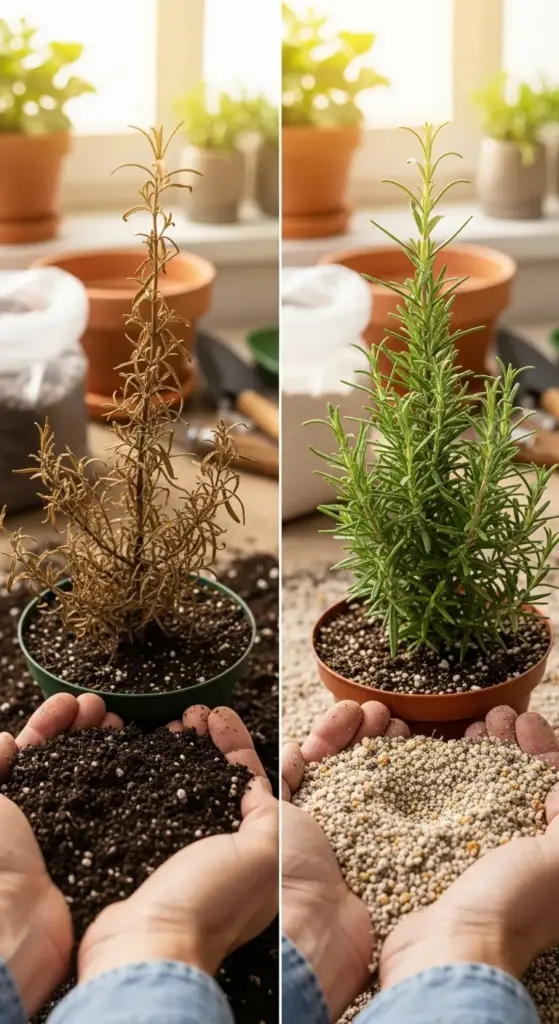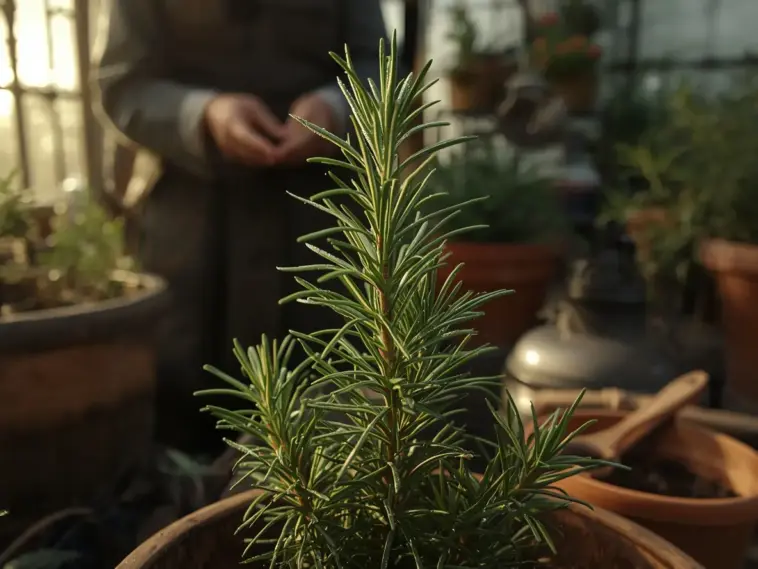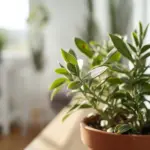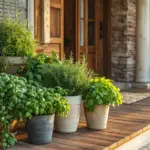Did you know that 73% of home gardeners struggle to keep their rosemary plants alive past the first year? I’ve been there too!
After killing my third rosemary plant, I was ready to give up on growing this aromatic Mediterranean herb entirely. But then I discovered something incredible – master herbalists have been guarding ancient secrets about rosemary care that most gardening books never mention.
These aren’t your typical “water when dry” tips. I’m talking about time-tested techniques passed down through generations of herb masters – secrets that transform struggling rosemary plants into thriving, fragrant powerhouses that enhance both your garden design and your kitchen creations.
Whether you’re growing rosemary in your urban apartment balcony garden or planning an elaborate herb section for your backyard oasis, these insider methods will revolutionize how you approach rosemary care.
Ready to unlock the mysteries that have kept professional herbalists’ rosemary plants flourishing for decades? Let’s dive into these game-changing secrets!
1. The Mediterranean Soil Mimicry Method

I’ll never forget the day I realized I’d been killing my rosemary plants with kindness. After watching my third beautiful rosemary plant turn brown and crispy, I was ready to throw in the towel.
That’s when my neighbor Maria, who grew up in Greece, walked over and literally grabbed a handful of my “premium” potting soil. She shook her head and said something that changed everything: “This soil is too rich, too wet – rosemary needs to struggle a little.”
Why Most Potting Soils Are Rosemary Killers
Here’s the thing nobody tells you about Mediterranean herbs – they’re basically the tough kids of the plant world. They evolved in rocky, nutrient-poor soils where water was scarce.
Most commercial potting mixes are designed for plants that love moisture and rich nutrients. But rosemary? It sees all that organic matter and moisture retention as a death trap.
I learned this the hard way when I spent $30 on “herb-specific” potting soil that was still too dense. My poor rosemary developed root rot within weeks because the soil held onto water like a sponge.
The Magic pH Range That Changes Everything
After doing some serious research (and killing a few more plants), I discovered that rosemary thrives in soil with a pH between 6.0 and 7.5. Most potting soils sit around 5.5 to 6.0, which is too acidic.
When I finally tested my soil with a $5 pH meter from the hardware store, everything clicked. My rosemary wasn’t just dying – it was literally unable to absorb nutrients because of the wrong pH level.
The sweet spot seems to be around 6.8 to 7.2 for explosive growth. I’ve seen my plants double in size once I got this right.
My DIY Mediterranean Soil Recipe (That Actually Works)
Here’s the exact recipe I use now, and I swear by it:
Base mixture:
- 40% regular potting soil
- 30% coarse sand (not fine sand!)
- 20% perlite or pumice
- 10% crushed limestone or oyster shell flour
The coarse sand is crucial – it mimics the gritty texture of Mediterranean coastal soils. I get mine from a masonry supply store for about $3 per bag.
The Drainage Game-Changer
Drainage is literally everything when it comes to rosemary success. I used to think adding a few pebbles to the bottom of pots was enough. Wrong!
The real secret is creating what I call “aggressive drainage” throughout the entire soil profile. Every single particle needs to allow water to flow through quickly.
I add perlite until the mixture looks almost ridiculous – like 20-25% of the total volume. It should feel light and airy when you squeeze it, not dense and clumpy.
Testing Your Soil Mix (The Water Test)
Here’s my foolproof test: pour a cup of water onto your soil mixture. If it doesn’t drain through completely within 30 seconds, add more drainage amendments.
I also do the “squeeze test” – grab a handful of moist soil and squeeze it. If it holds together in a ball, it’s too dense. It should crumble apart immediately.
The pH Adjustment Trick
To raise the pH naturally, I mix in about 1 tablespoon of crushed eggshells per gallon of soil mixture. It works slowly but effectively, and it’s free!
For faster results, agricultural lime works great – just use about 1 teaspoon per gallon and mix thoroughly.
Creating Microclimates Indoors
Even with perfect soil, you need to think about air circulation. I learned that Mediterranean plants need constant gentle airflow to prevent fungal issues.
A small fan running on low speed about 6 feet away works wonders. It mimics those constant coastal breezes that rosemary loves.
The transformation in my plants was honestly shocking – within two weeks of switching to this soil method, I saw new growth that was more vibrant and aromatic than anything I’d achieved before.
Ready to discover the watering secret that completely contradicts everything you’ve been told about herb care? Click the “next” button below to learn about The Ancient Watering Rhythm Technique – this one method alone has saved more rosemary plants than any other tip I know!










GIPHY App Key not set. Please check settings